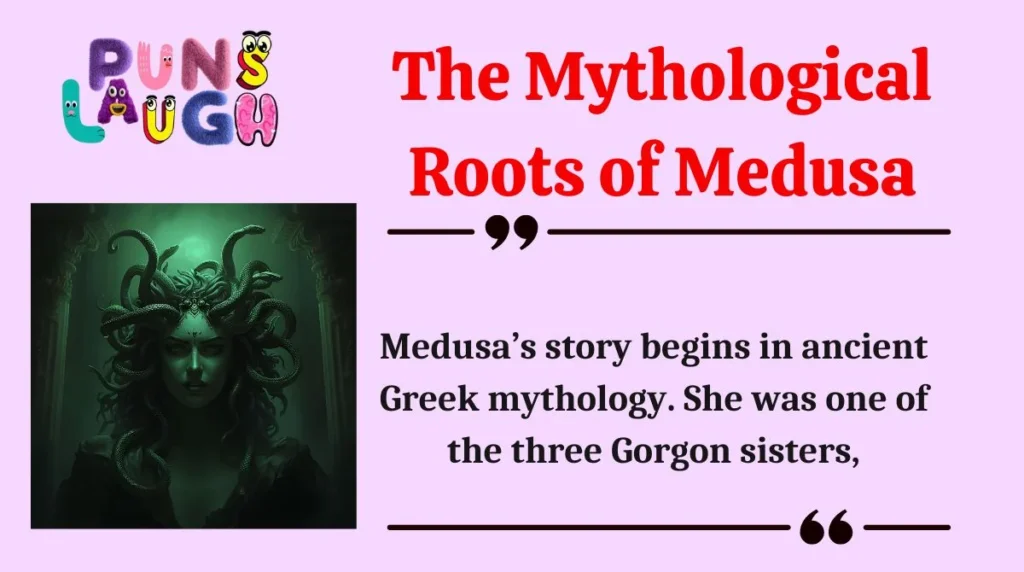Medusa tattoos have captivated people for centuries. This timeless mythological figure continues to inspire bold, meaningful body art.
Whether you’re drawn to her for protection, empowerment, or personal transformation, a Medusa tattoo carries layers of history and symbolism worth exploring before you ink her image on your skin.
This article dives deep into the Medusa tattoo meaning, its mythological roots, artistic styles, placement ideas, cultural relevance, and practical tips — helping you make a confident and informed choice.
The Mythological Roots of Medusa

Medusa’s story begins in ancient Greek mythology. She was one of the three Gorgon sisters, often described with venomous snakes for hair and the power to turn anyone who met her gaze into stone.
Interestingly, Medusa wasn’t always a monster. In early versions of the myth, she was described as a beautiful maiden. The tragedy of her transformation begins with a curse from the goddess Athena. After Medusa was violated in Athena’s temple by Poseidon, the goddess punished her by turning her hair into serpents and cursing her deadly gaze.
This dual nature — both victim and villain — makes Medusa one of the most complex figures in mythology. Her image was carved on shields and temple walls in ancient Greece as a protective symbol to ward off evil spirits.
“Medusa’s face on the warrior’s shield wasn’t a trophy — it was a talisman of protection.”
Understanding this origin is essential because it shapes the modern Medusa tattoo meaning: she’s not just a monster but a symbol of power, resilience, and transformation.
Core Symbolism of Medusa Tattoos
Medusa tattoos carry a variety of meanings depending on the wearer’s perspective. Below are the most common interpretations:
Feminine Power and Defiance
Medusa embodies strength in the face of oppression. Many women today choose her image as a statement of defiance against injustice and as a tribute to their inner power. She represents not weakness but unyielding resilience.
Protection and Warding Off Evil
Historically, the Gorgon’s head was engraved on shields, doors, and temples to protect from harm and misfortune. A Medusa tattoo can serve as a modern talisman, believed to repel negativity and evil intentions.
Personal Transformation and Healing
Because Medusa’s life changed so dramatically — from mortal beauty to mythical guardian — she symbolizes personal transformation. People often get a Medusa tattoo to mark their own journey of healing from trauma or overcoming hardships.
Rebellion, Mystery, and Danger
With her piercing gaze and snake-crowned head, Medusa remains a figure of rebellion and mystery. Some choose her image to reflect their non-conformist spirit or as a reminder of the darker, more enigmatic aspects of life.
Vulnerability and Tragedy
Beyond the monstrous visage lies Medusa’s tragedy — a victim punished for her suffering. Her image can express empathy, sorrow, or shared struggles with vulnerability.
Modern Interpretations: Medusa as a Cultural Icon
Today, Medusa has evolved from a mythical warning into a symbol of empowerment and self-reclamation.
- Feminist Icon: Medusa is embraced as a symbol for survivors of violence and injustice. She represents taking back control of one’s narrative.
- Pop Culture Presence: Her image graces fashion (such as the iconic Versace logo), artwork, movies, and literature.
- Artistic Muse: Tattoo artists frequently reinterpret her with contemporary styles — soft, ethereal portraits or fierce warrior-like depictions.
These shifts mean that a Medusa tattoo no longer belongs to just mythology; it reflects modern stories of strength, survival, and identity.
Gender Perspectives in Medusa Tattoos
Medusa Tattoos for Women
For women, Medusa often represents empowerment, healing, and protection. The tattoo can symbolize reclaiming agency, especially for those who have faced adversity or injustice.
Medusa Tattoos for Men
Men may view Medusa as a representation of mystery, rebellion, or respect for feminine strength. She’s often seen as an emblem of respect toward powerful women and as a reminder of consequences tied to hubris.
Gender-Neutral Meanings
For anyone, regardless of gender, Medusa tattoos symbolize transformation, resilience, and the power to protect oneself against external harm.
Emotional and Personal Symbolism
A Medusa tattoo often tells a deeply personal story. Here are common emotional motivations:
- Survivors of Trauma: A symbol of endurance and personal recovery.
- Commemorating Change: For those who’ve reinvented themselves after life-changing experiences.
- Spiritual Symbol: As a guide or guardian figure, Medusa’s image may feel protective or comforting.
Case Study:
Sophia, a 32-year-old artist, chose a minimalist Medusa portrait on her forearm after leaving an abusive relationship. For her, the tattoo is a reminder of her survival and growth.
“I didn’t get Medusa to look fierce; I got her so I could remember I’m stronger than what I survived.”
Popular Medusa Tattoo Styles and Design Trends
Tattoo art allows endless interpretations of Medusa. Here are the most popular styles:
| Style | Key Features | Best For |
|---|---|---|
| Classic Greek-Inspired | Marble-statue look, ancient motifs | History enthusiasts, timeless design |
| Realistic Black & Grey | High detail, shadow-heavy, dramatic | Those who want an intense, story-driven piece |
| Neo-Traditional | Bold outlines, vintage shading, vivid hues | Fans of classic tattoo styles |
| Minimalist/Fine-Line | Subtle, delicate, often monochrome | Discreet tattoos, first-timers |
| Geometric/Abstract | Shapes and patterns blend with portrait | Modern, edgy aesthetics |
| Full-Color Art | Deep reds, golds, greens for serpents | Artistic, eye-catching body art |
Color Symbolism
- Green: Renewal and serpent energy
- Red: Passion and transformation
- Gold: Divine power and resilience
- Black & Grey: Elegance, timelessness, gravitas
Tattoo Placement Ideas and Their Impact

The placement of a Medusa tattoo often reflects how personal or public the wearer wants the meaning to be.
- Forearm or Arm: Bold, visible statement of strength
- Back or Shoulders: Classic warrior-like placement, evokes protection
- Chest or Sternum: Intimate, close to the heart
- Thighs and Legs: Larger artistic canvases for detailed designs
- Neck or Behind Ear: Subtle yet rebellious
- Ribs or Side: Deeply personal, often hidden and symbolic
Tip: Larger placements like the back or thigh allow more detail in the snakes and facial expressions.
Cultural and Social Significance
- In ancient Greece, Medusa’s head was a sacred apotropaic symbol — meant to deflect harm.
- In modern feminist movements, she’s seen as a figure of resistance and self-ownership.
- Some cultures interpret her as a guardian spirit rather than a monster.
- However, in conservative circles, her image can still be controversial, sometimes misread as dark or aggressive.
Practical Considerations Before Getting a Medusa Tattoo
Choosing the Right Tattoo Artist
A Medusa tattoo often involves intricate facial details and snake textures. Always:
- Look for an artist experienced in portraiture and mythological themes.
- Review portfolios to ensure they’ve mastered realistic shading and expressions.
- Choose someone who respects your personal story behind the tattoo.
Cost Factors
The price varies based on:
- Size: Larger pieces can be significantly more expensive.
- Style: Realistic or full-color tattoos often cost more due to time and complexity.
- Artist Reputation: Experienced artists charge premium rates but deliver better results.
Skin Tone and Design Adjustments
Tattoo colors show differently across skin tones. An experienced artist can suggest:
- Shading techniques to enhance contrast.
- Color palettes that maintain vibrancy over time.
Tattoo Care for Longevity
Immediate Aftercare
- Clean the tattoo gently with mild soap.
- Keep it moisturized but avoid heavy creams.
- Don’t scratch or pick at scabs.
- Avoid swimming pools and direct sunlight for the first two weeks.
Long-Term Maintenance
- Use sunscreen to protect from fading.
- Schedule touch-ups if colors or lines fade over time.
- Keep your skin healthy and hydrated.
Common Mistakes to Avoid
- Rushing to choose a design or artist.
- Exposing a fresh tattoo to sunlight or unsanitary water.
- Skipping follow-up care, which can lead to infections or dull colors.
Medusa Tattoos as a Personal Journey
Every Medusa tattoo carries a unique personal narrative. Over time, many people find their relationship with the tattoo evolves — from a mark of pain to a symbol of victory or wisdom.
A tattoo this meaningful deserves thoughtful design, skilled artistry, and careful aftercare.
Frequently Asked Questions (FAQ)
What does a Medusa tattoo symbolize most commonly?
It often represents feminine strength, transformation, and protection but can also signify rebellion or empathy for Medusa’s tragic story.
Is a Medusa tattoo only for women?
No. While often embraced by women, it resonates with anyone who identifies with its deeper meanings — courage, resilience, or resistance.
Does a Medusa tattoo always represent trauma?
Not necessarily. Some people choose it for its mythological heritage, artistic beauty, or as a protective symbol.
Which placement is most popular for Medusa tattoos?
The forearm, back, and thigh are common choices because they provide space for detailed designs and visibility.
How painful is it to get a Medusa tattoo?
Pain depends on placement and size. Areas like ribs or sternum tend to be more sensitive than arms or thighs.
Conclusion
The Medusa tattoo is more than just a striking image; it’s a fusion of ancient myth, personal narrative, and artistic expression.
Whether you choose her for protection, empowerment, or transformation, Medusa’s story offers a lasting symbol that connects the past with your present journey.
A well-chosen Medusa tattoo becomes not only body art but a conversation starter and a reflection of inner strength.





